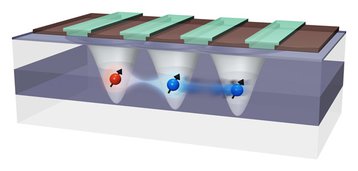Japan’s first quantum computer, built by the Riken research institute, officially went online on March 27.
Now online, joint researchers will be able to access and use the quantum computer which is based in Wako, Saitama Prefecture.
“The release is not a goal, but a milestone,” said Yasunobu Nakamura, director of the Riken Center for Quantum Computing in Wako, Saitama Prefecture. “The race has just begun.”
Riken’s quantum computer currently has 64 qubits, though the institute says that to reach its goal of being widely used by 2040, the computer will need to increase this number to one million qubits.
Many organizations globally are working on quantum computers, which will be able to perform multiple complex calculations at once, potentially solving issues in a matter of minutes that would take tens of thousands of years on a traditional supercomputer, and will be able to easily decipher current encryptions used online and in financial sectors.
Quantum computers are based on the principles of quantum mechanics, using the behavior of micro-particles such as electrons and atoms to perform calculations. There are several different ways to create a quantum computer, but in Riken’s case, the institute uses a superconducting method whether the quantum bit is surrounded by superconducting materials and cooled to extremely low temperatures.
The extremely low-temperature requirements (~ -272°C), along with the relative unreliability of current quantum computers and the challenge of scaling them up by such a vast amount, prevent them from being practically usable, as of yet.
Riken scientists demonstrate the successful connection of two distant qubits
Riken on April 3 successfully demonstrated the connection of two qubits that were physically distant from one another.
The success of this attempt could prove useful to the scaling up for quantum computers based on tiny dots of silicon. Currently, these quantum computers have proven easy to connect when the qubits are close to one another, but have been difficult to link when far apart, meaning that the qubits need to be squeezed into a very small area.
To get around this Akito Noirki from the Riken Center for Emergent Matter Science and his team have used a two-qubit logic gate between silicon spin qubits.
“While there has been a lot of work in this area using various approaches, this is the first time that anyone has succeeded in demonstrating a reliable logic gate formed by two distant qubits,” says Noiri. “The demonstration opens up the possibility of scaling up quantum computing based on silicon quantum dots.”
Using coherent spin shuttling, the team has been able to move single-spin qubits across the quantum dots without affecting their phase coherence by pushing the electrons with a voltage.
The distance between the two qubits was relatively small, and the Riken team is now looking to extend the distance to around a micrometer.

